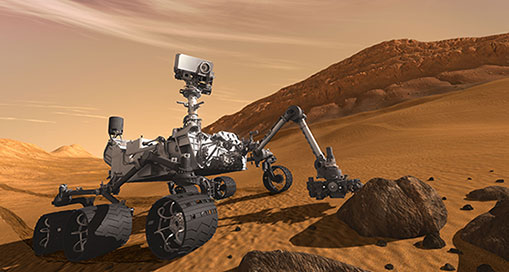/exploration.aspx?width=452&height=274)
The National Institute of Aerospace
"NIA conducts a broad range of scientific and engineering research sponsored by NASA, other government agencies, and the aerospace industry. This work is performed by resident scientists and engineers, faculty, students, and consultants in principle areas of investigation to include space exploration, systems engineering, materials science, flight systems, aerodynamics, air traffic management, aviation safety, planetary and space science, and global climate change.
Research programs, led by faculty in residence at NIA, serve as the core of the Institute's academic research program. Through NIA's University Research Program, faculty and students at our member universities collaborate with NASA research leaders in fundamental investigations in aerospace, mechanical, electrical, and systems engineering; materials science; applied mathematics, meteorology and other related fields.
NIA also collaborates with leading research institutions worldwide, including universities, government laboratories, industry, and other non-profit institutes to accomplish its research objectives. NIA conducts applied research with and for the aerospace industry. The industry research programs are often collaborative, involving staff, faculty, students, and NASA colleagues. Through NIA, industrial partners can gain access to LaRC personnel, facilities, and intellectual property.
NIA has significant experience developing innovative space transportation and surface systems to support human lunar and Mars exploration for a variety of NASA missions. We have also developed and applied a wide variety of systems analysis tools and methods for the design of these exploration systems. Our in-residence faculty members have led NASA's Exploration System Architecture Study (ESAS) to define the current lunar architecture and supported the development of NASA's Mars architecture systems and technologies." ... more
|











 - Astronautic
- Astronautic - Astronomy
- Astronomy - Space Astronomy
- Space Astronomy

